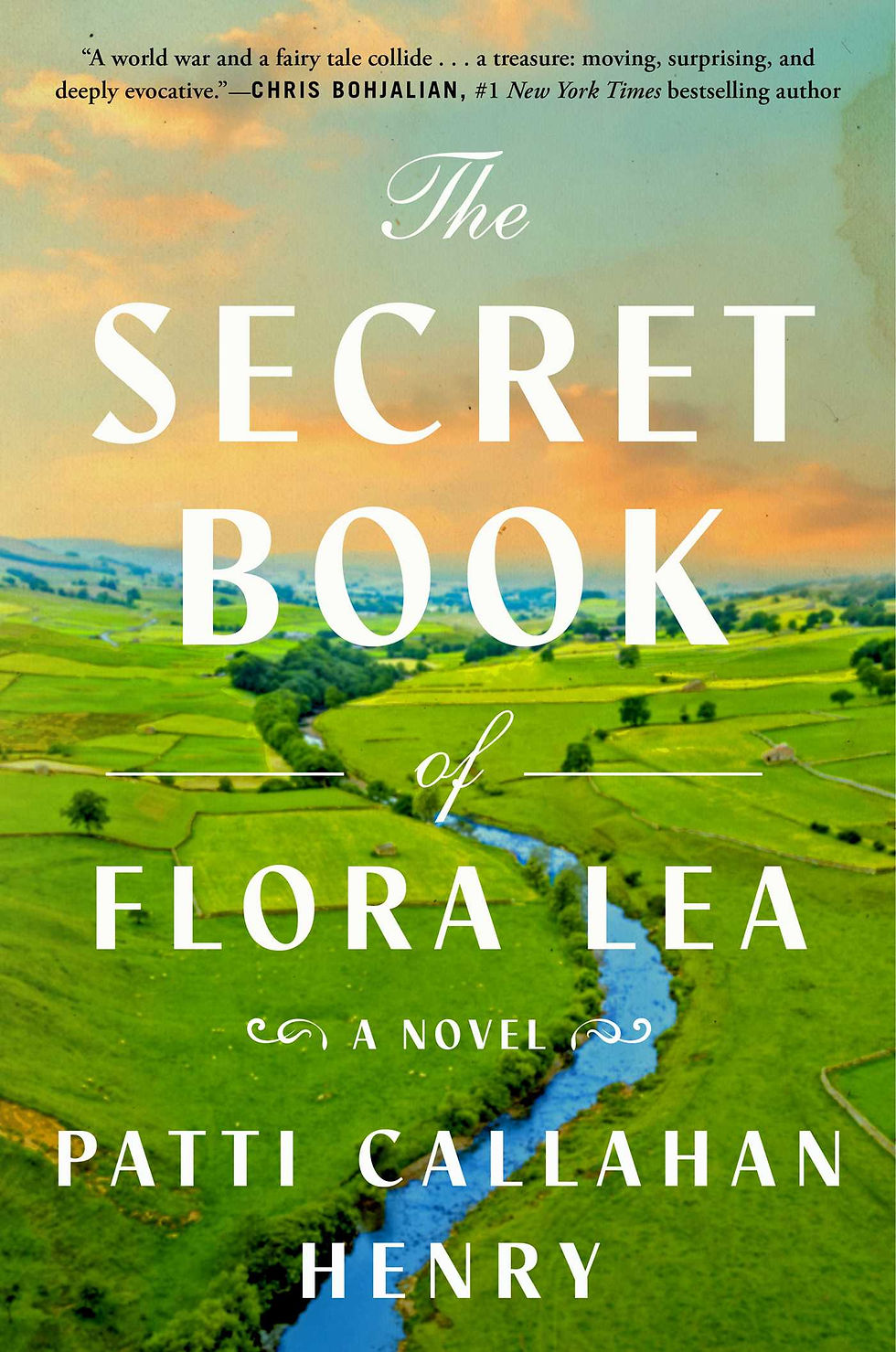AWF: Book Review
- Patti Callahan Henry

- May 8, 2023
- 4 min read
Updated: May 11, 2023
THE SECRET BOOK OF FLORA LEA BY PATTI CALLAHAN HENRY
The Secret Book of Flora Lea
By Patti Callahan Henry
Atria Books, An Imprint of Simon & Schuster, Inc., 2023
Hardcover, $28.99
Reviewed by Linda Henry Dean
It is hard to imagine a situation in which a loving parent would pack a knapsack for his/her child, hang a luggage tag around the child’s neck (along with a gas mask and a self-addressed postcard to be sent when the child found a home), and put the child on a train bound for an unknown destination with strangers who would provide housing. However, this is exactly what happened in September 1939, when the British government implemented its Operation Pied Piper. Families were encouraged to send their children to host families in the countryside, or even to other countries such as Canada, Australia, South Africa, and America, to protect them from the impending German bombings.
According to the end notes of The Secret Book of Flora Lea, over three million children were evacuated in just four days, and ultimately over three and a half million children were relocated. The British government’s bizarre choice to name its safe-haven program after an ancient German legend in which all of a town’s children are led by a gaily clad piper to a river to drown (or disappear) is not lost on the author, Patti Callahan Henry.
The evacuation of two young girls from London as participants in Operation Pied Piper is the starting point for Henry’s seventeenth novel. Flora Lea Linden (age 5) and her fourteen-year-old sister, Hazel, the daughters of a London war widow, land in the picturesque village of Binsey, Oxfordshire, at the end of their train journey and are taken in by the kind Bridie Aberdeen and her teen-aged son, Harry. Although Bridie is regarded as somewhat eccentric by other villagers, she adores and nurtures the children, and they thrive under her care. Harry, Hazel, and Flora love exploring the woodlands along the River Thames near the Aberdeen cottage.
This lush wilderness, far from the bombs shattering the London sky, inspires Hazel to make up stories to comfort her little sister, all set in a safe fantasy world which she calls “Whisperwood,” known only to the two of them. One day, Harry and Hazel leave Flora alone for a few minutes napping on a blanket near the Thames; when they return, Flora is missing. Despite exhaustive searches of the river, her body is never found.

The story unfolds in two timelines, alternating between the 1939-1940 years in Binsey and 1960 London, where the adult Hazel works at Hogan’s Rare Bookshop but is about to begin her dream job at Sotheby’s in rare literary collections. On her last day at Hogan’s, she unwraps a parcel sent from America that contains a book with original illustrations called Whisperwood and the River of Stars. Reading the book, Hazel realizes that only Flora, or someone who knew her, could be the author of the stories that had been their secret. Thus begins her quest to track down her beloved sister who may be alive after all.
Hazel’s obsession jeopardizes her new position at Sotheby’s, her relationship with her fiancée Barnaby, and the trust of her former employer Edwin Hogan as she chases every tenuous lead. But her investigation also takes her back to Harry, her first love, who has become a successful artist in St. Ives, and to Bridie, who has also never ceased grieving for the child that went missing while in her care.
A central motif is the importance of story and storytelling to all cultures. One character remarks, “What a fairy tale is meant to do, if it’s meant to do anything at all, Tolkien says, is give us new perspective in our world, the consolation of a happy ending. A recovery of sorts. Like we leave that world to see ours anew.” Her comment seems especially apropos within the context of Henry’s novel.
The narrative is beautifully told, replete with vivid details of the UK settings that transport the reader to the novel’s world. While it is the mystery of Flora’s disappearance that drives the plot, several other themes are woven in—forgiveness and self-forgiveness, the healing power of the natural world, the comfort of stories, and self-discovery. It all culminates in an astonishing and satisfying plot twist.
Patti Callahan Henry is a New York Times, USA Today, and Globe and Mail best-selling author of sixteen previous novels. She has received the Harper Lee Award for Distinguished Writer of the Year, the Alabama Library Association Book of the Year award, and the Christy Award for Book of the Year. She resides in Mountain Brook, Alabama, and Bluffton, South Carolina.
Linda Henry Dean was Education Director at Alabama Shakespeare Festival and Director of the Alabama Institute for Education in the Arts prior to her retirement. She has also served as President of Alabama Writers’ Forum.
Author Photo: Bud Johnson Photography


















